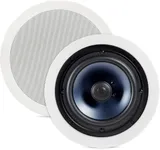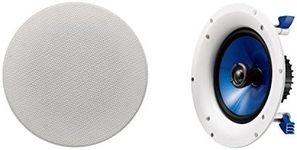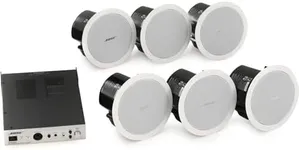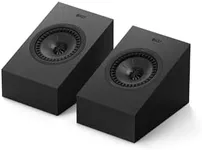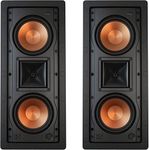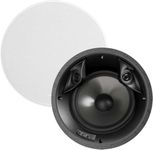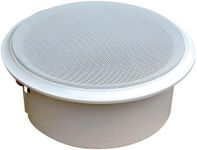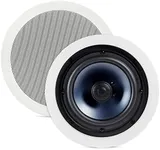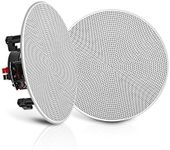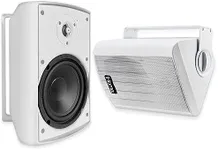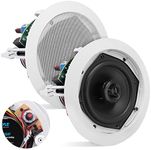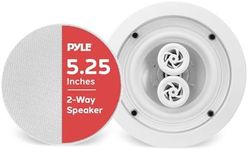Buying Guide for the Best Ceiling Speakers For Atmos
Choosing the right ceiling speakers for Atmos can significantly enhance your home theater experience. Atmos technology creates a more immersive sound by adding height channels, making you feel like you're in the middle of the action. When selecting ceiling speakers for Atmos, it's important to consider several key specifications to ensure you get the best fit for your needs. Understanding these specs will help you make an informed decision and achieve the optimal sound quality for your setup.Speaker SizeSpeaker size refers to the diameter of the speaker cone. This spec is important because it affects the sound quality and coverage area. Common sizes range from 6.5 inches to 8 inches. Larger speakers generally produce better bass and fuller sound, while smaller speakers are more compact and easier to install. If you have a large room, opt for larger speakers to ensure adequate sound coverage. For smaller rooms, smaller speakers may suffice.
Power HandlingPower handling indicates the amount of power a speaker can handle without distortion. This is measured in watts and is crucial for ensuring your speakers can handle the output from your amplifier or receiver. Look for speakers with a power handling capacity that matches or exceeds your amplifier's output. For instance, if your amplifier outputs 100 watts per channel, choose speakers that can handle at least 100 watts to avoid damage and ensure clear sound.
Frequency ResponseFrequency response measures the range of sounds a speaker can reproduce, from the lowest bass to the highest treble. This spec is important for achieving a balanced sound. A typical frequency response for ceiling speakers might be 50 Hz to 20 kHz. If you enjoy deep bass, look for speakers with a lower frequency response. For general use, a wide frequency range will ensure you hear all the details in your audio.
SensitivitySensitivity indicates how efficiently a speaker converts power into sound, measured in decibels (dB). Higher sensitivity speakers require less power to produce the same volume as lower sensitivity speakers. This is important for matching your speakers to your amplifier. If you have a lower-powered amplifier, choose speakers with higher sensitivity (90 dB or above) to achieve better sound output. For powerful amplifiers, sensitivity is less critical.
Installation TypeInstallation type refers to how the speakers are mounted in your ceiling. This can include in-ceiling, on-ceiling, or angled designs. In-ceiling speakers are flush-mounted and provide a clean look, while on-ceiling speakers are surface-mounted and may be easier to install. Angled speakers can direct sound towards the listening area, enhancing the Atmos effect. Consider your room layout and aesthetic preferences when choosing the installation type.
Build QualityBuild quality encompasses the materials and construction of the speakers. High-quality materials like Kevlar or aluminum can improve durability and sound quality. This spec is important for ensuring your speakers last and perform well over time. Look for speakers with robust construction and good reviews on build quality. If you plan to use your speakers frequently or in a high-humidity area, prioritize build quality to avoid wear and tear.


